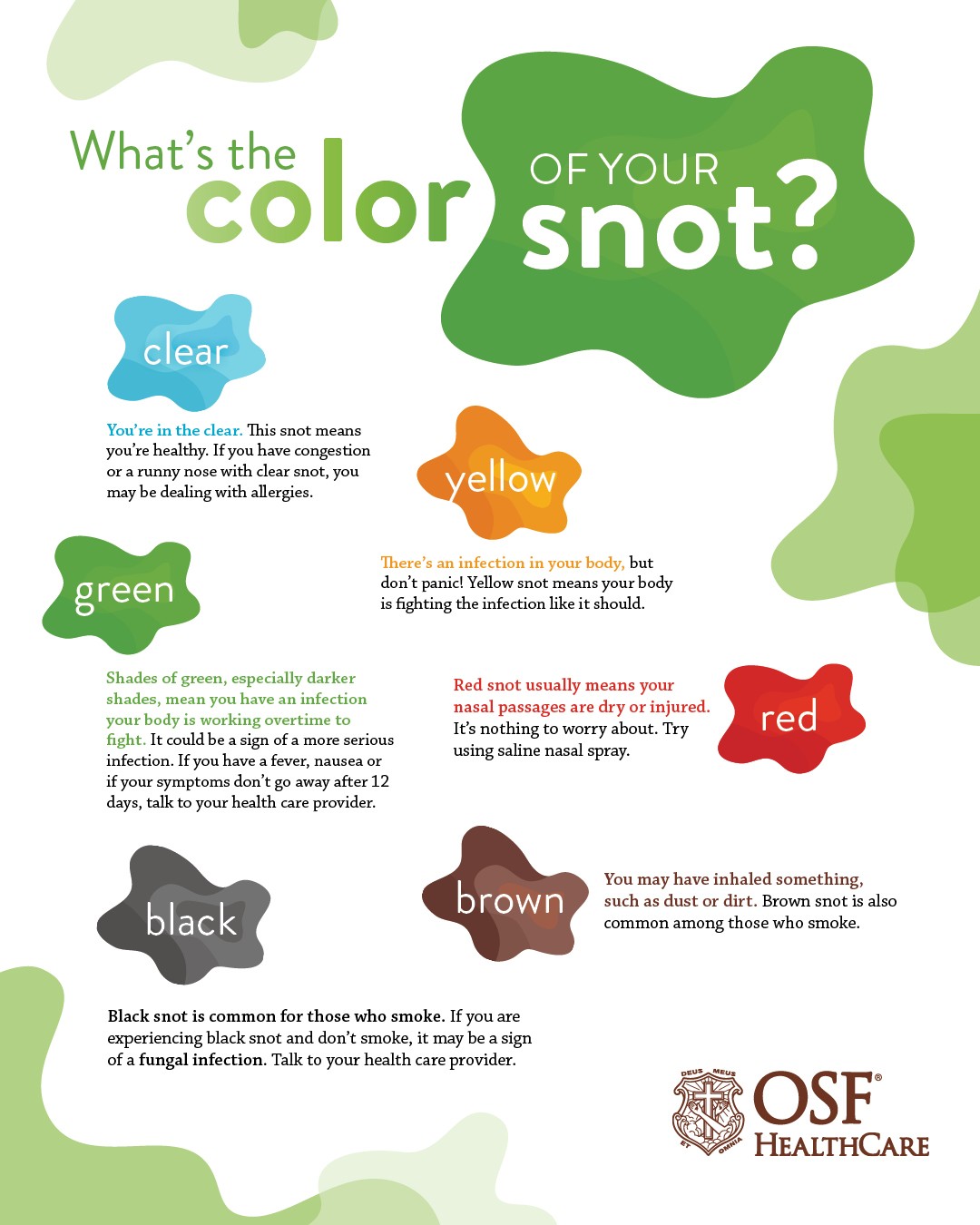Yellow snot is a common occurrence, often causing concern. While it might seem alarming, it’s usually a sign your body is working as it should. This article explores the reasons behind yellow mucus, what it signifies, and when you should seek medical advice.
 Different colors of mucus and what they mean
Different colors of mucus and what they mean
Decoding the Color of Your Mucus
Mucus, also known as snot or boogers, plays a vital role in protecting your body. It lubricates and protects sensitive tissues in your nose, throat, and sinuses. Normally, mucus is clear. However, its color can change, indicating different health conditions. Yellow snot typically signifies the presence of an infection.
Yellow Snot: A Sign of Infection
The vibrant yellow color of your snot comes from white blood cells. These cells are essential components of your immune system, rushing to the site of infection to fight off invading germs. As these white blood cells battle the infection, some die and are expelled in your mucus, giving it the characteristic yellow hue. This process is a natural part of your body’s defense mechanism.
Other Snot Colors and Their Meanings
While yellow snot is a common indicator of infection, mucus can present in other colors, each with its own meaning:
- Clear: Healthy, normal mucus is typically clear. It can also indicate allergies or environmental irritants.
- White: Thick, white mucus can signal congestion or dehydration.
- Green: Green mucus suggests a more persistent or advanced infection. The green color indicates a higher concentration of white blood cells.
- Red or Pink: This signifies the presence of blood, often due to dry nasal passages, irritation, or nose picking. In rare cases, it can be more serious.
- Brown: Brown mucus may indicate old, dried blood or exposure to dirt and dust.
- Black: This can be caused by smoking, exposure to pollutants, or, in rare cases, a fungal infection.
When to See a Doctor
While yellow snot usually indicates a common cold or mild infection, it’s important to monitor your symptoms. Consult a healthcare provider if:
- Your yellow mucus persists for more than 10-12 days.
- You experience severe symptoms, such as high fever, persistent cough, or difficulty breathing.
- You notice other alarming changes in your mucus color, such as black or persistent red.
Taking Care of Yourself
If you have yellow snot, these self-care measures can help:
- Stay Hydrated: Drinking plenty of fluids helps thin the mucus, making it easier to clear.
- Use a Humidifier: Adding moisture to the air can ease congestion and soothe irritated nasal passages.
- Rest: Getting enough rest allows your body to focus on fighting the infection.
- Over-the-Counter Medications: Pain relievers and decongestants can help alleviate symptoms.
Conclusion
Yellow snot, while often unsettling, is usually a sign your immune system is actively fighting off infection. By understanding what different mucus colors mean, you can better monitor your health and seek appropriate medical care when needed. Remember to consult a healthcare professional if your symptoms persist or worsen.